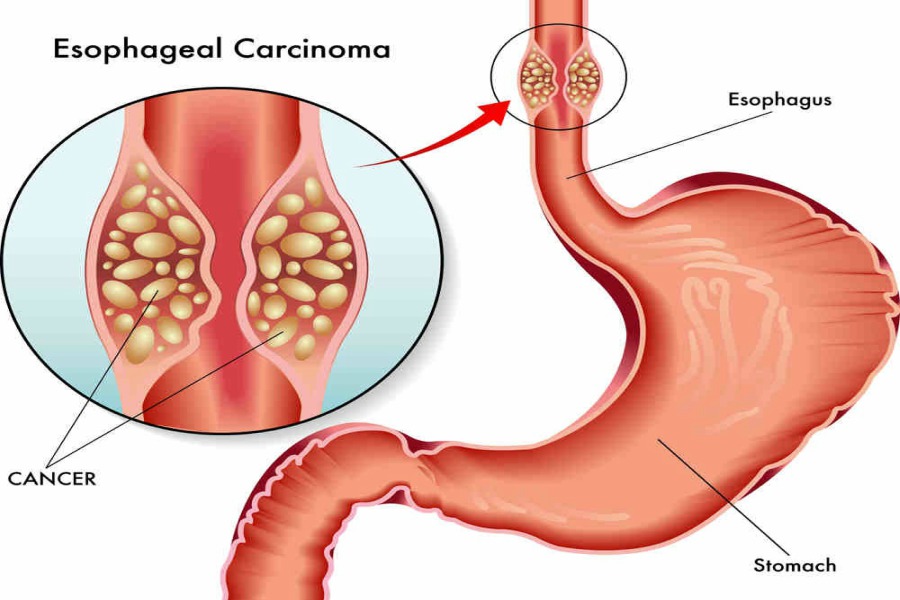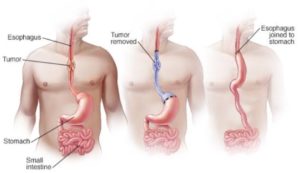
Cancer for the esophagus that is the food pipe is a bit uncommon cancer. Like most of the cancer, when detected on time and proper treatment is done, we can win our battle against this deadly condition. An optimistic and realistic approach and specialized care are needed to reduce suffering.
I fully understand what all goes in the head and the mind of someone who has suddenly come to know about such a deadly disease. The sense of shock, disappointment, the feeling of gloom, and the questions “why me? how is this possible? I hope the report is wrong” and all. The same applies to the close relates as well.
But once you have confirmed that the reports are true and you have accepted the situation, you have to stand up to face the situation. And your attitude towards this adversity makes all the difference in the outcome and your sufferings.
If the disease has not spread and is curable, your attitude to fight it out will have a huge impact on the overall outcome of treatment and surgery. In case the disease has spread and is not curable, in such situations also your attitude will be the deciding factor in the amount of suffering you have from this disease.
The treatment of this disease is complex and needs a team approach. And the most important member of this team is you, yourself. Hence, accept the reality, calm down, mobilize your inner mental strength, and get up to face the situation. Once you do this, you will find all the ways and means to face the situation.
The specialist doctor will first complete all the tests and investigations needed to plan the treatment. These include tests to check your overall health and to check the stage of the tumor. You must understand that no form of treatment should be done before a thorough evaluation of the extent of the spread of the disease is done.
At this stage, the endoscopy and the biopsy of the tumor would already be available. You will be then advised a PET CT scan of the whole body to stage the disease.

It will give information about the local and distal spread of disease. Means up to what layer of the food pipe the disease has spread, has it spread to the surrounding tissue and other organs.
In some cases, other tests like endoscopic ultrasound, bronchoscopy, and staging laparoscopy are also done to check the spread of the disease. These tests are done when deemed necessary after the information is gathered from an endoscopy, biopsy, and PET CT scan.
The main aim of all these evaluations is to know whether the disease is in a curable stage or not. If the disease has not spread to the distant and the vital surrounding organs, we can aim for curative treatment. This means we can aim to get a long disease-free life. For those having distant spread, the treatment is palliative. Means treatment is aimed at reducing the suffering and not on becoming a disease-free and prolonging life. Palliative treatment includes measures to ensure proper nutrition, controlling pain, and other symptoms.
Treatment with curative intent includes chemotherapy with or without radiotherapy as the first step, followed by reevaluation by a repeat PET CT, followed by surgery and post-surgery rehabilitation and follow up

Once the evaluation is done, and the disease is deemed curable, either chemotherapy or a chemo-radiotherapy is advised depending on the biopsy reports. Usually, these therapies are given for three cycles. In cases where the patient is unable to eat properly, a tube is placed through the nose or through the tummy wall by doing a small surgery. Feeding is given through this tube to maintain nutrition. Nutrition is vital for the patient to tolerate chemotherapy and future surgery.
At the end of the third cycle, PET CT scan is repeated to again check the status of the disease. We need to see that the disease is still curable; that is it has not spread to other organs during chemotherapy. We also need to see the response to the chemotherapy, which can give the idea of the possible long term outcome of the whole treatment. In some unfortunate patients, whom the disease spreads during this period the planning is changed, and surgery is then not advised. Such patients will not get any benefit from the major and stressful surgery, and hence it is not done.
Once the PET Ct shows no disease in other organs after the completion of chemotherapy, a general checkup is done again to assess the fitness of the patient for major esophageal cancer surgery. Surgery is planned only when the patient if fully fit to undergo surgery.
Esophageal cancer surgery is major surgery, involving removal of the esophagus that is the food pipe along with the surrounding tissue, especially the lymph glands and lymph channels and a part of upper stomach. The surrounding tissues especially the lymph glands and channels are the major cause of recurrence of disease if they are not removed during the surgery. Once the food pipe is removed, a long tube is reconstructed from the remaining part of the stomach. This tube is replaced in place of the original food pipe and is reattached to the cut end of the remaining food pipe in the neck or upper chest.

This can be achieved by many different ways. All the procedure will require surgery in the chest, the tummy, and the neck. This can be done as an open surgery as well as by a minimally invasive surgery that is a laparoscopic and a thoracoscopic approach. First, the food pipe and surrounding tissue are separated out in the chest part by either open chest surgery or thoracoscopic surgery. Then surgery is continued in the tummy part, the separated food pipe along with the upper part of the stomach is divided and removed. A tube from the remaining stomach is created and is replaced in place of the removed food pipe. And finally, in the neck part of surgery, the stomach tube is reattached to the cut end of the food pipe in the neck. This creates a new passage for food to pass from mouth to the intestine.
In today’s time, these complex surgeries are routinely done by a laparoscopic and thoracoscopic approach. This certainly improves the post-surgery pain, early recovery and mobilization and a better functional outcome after surgery.
Esophageal cancer surgery is major surgery and has a significant risk of complications. The common ones that we are worried about are post-surgery bleeding, infection, breathing, and lung problems. Certainly, all care is taken before and during surgery to prevent this, still, we cannot prevent this completely. Hence observation and monitoring in an intensive care unit is very necessary for the initial 24 hours.
Once the first 24 hours are uneventful, the patient is allowed to get out of bed with help. Is shifted to the ward or private room for further treatment. Mobilization and diet are gradually started over the next 5-7 days period. If all goes well at the end of 7 days, the patient is able to eat and move around normally, all the tubes and catheters are removed. Patients are discharged in about 7-10 days’ time.
In cases of complications like infection, bleeding, or breathing problem the course will change. Another surgery, prolonged stay in ICU, and hospital may be required. This course differs for every patient with complications and is difficult to explain in this video. Many patients have a pretty fast recovery despite the complications and some may succumb to the complications. The risk of death in the initial one month of surgery remains about 5-6 % despite all the care and precautions taken before, during, and after surgery.
After surgery, rehabilitation and long term follow up is necessary. This is necessary to ensure full recovery to optimum health. Building up the nutrition, activity levels, and positive thinking are very important in the post-surgery part to get back to as normal a life as possible.
Your positive attitude and active participation in decision making and treatment are very important, whatever the stage of the disease. Active participation, positive outlook improves the outcome of treatment and reduces suffering. The disease may kill you, but don’t let it defeat you.